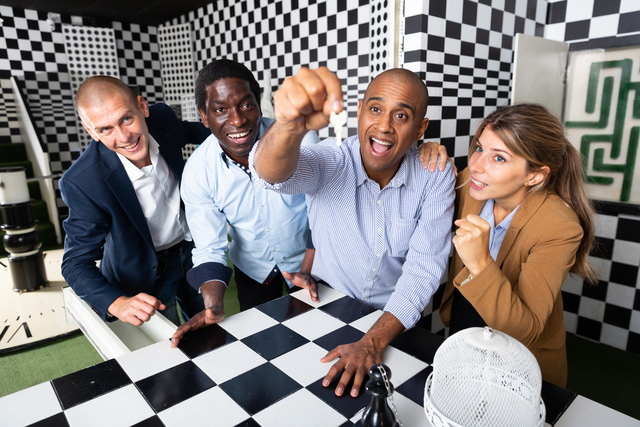How to Design Escape Rooms for Maximum Fun

You can always rely on Arcadia Adventures to have some of the most enthralling escape room designs. So, we asked them to provide some tips and insights for designing escape rooms for maximum fun. Check these suggestions out below. Then, get to work designing your own escape room adventure for your family, friends, co-workers, or another group!
How are escape rooms designed?
Escape room designs typically consist of a three-act structure, much like a play or other literary work. You can expect the adventure to start slowly, adding momentum and becoming more challenging, then reaching a climax as the clock ticks your time away. With each completed step, thing get more challenging and time becomes more of a premium. Everyone has to move, think and find solutions more quickly with each passing moment in order to successfully escape the room.
Escape room design can be pretty intricate. As with the three-act adventure, your guests will go through in the completed escape room, your design takes place in three parts. These design steps include:
- Developing the concept
- Determining how clues are discovered
- Designing the puzzles and game flow
Developing the Concept
Escape rooms are designed for full immersion. It is important to provide this for your guests by making the room look as the adventure theme dictates. When coming up with your concept, consider setting and theme a priority. From these come the narrative and story that you develop to pique your participants’ imaginations and make the setting feel even more authentic. All of these elements of theme, narrative and setting work together as part of a well-developed concept.
Another thing you must determine as part of your concept is how the players will play the game. What is the main objective? Do the players need to reveal a secret, stop a villain’s plot or defuse a bomb? The objective helps set the adventure tone. Tone can be heroic, competitive, survival, suspenseful, discovery or accomplishment, as examples.
Clue Discovery
After coming up with your overall concept, including the theme and setting, you must figure out which props and clues to use in your scenario. Props should serve a purpose or provide insight whenever possible. Some of the most commonly used elements that help players discover clues include:
- Letters
- Numbers
- Equations
- Codes
If, for example, your adventure involves the use of numbers, consider placing things in the setting that have numbers on them. A clock can be one such clue provider. You can also use books, maps and other leading props to help people uncover clues. If you will design your escape room in your office or home, try to use items found in that location. Otherwise, look online to gain some inspiration. Pinterest provides great ideas for escape room design. Other resources include movies based on capers, adventures or mysteries.
Remember that clues can be provided in plain sight but open to interpretation. Or, you can make your players search them out, such as behind compartments, doors, or in other locked spaces. Invest in some padlocks with combination locks or keys and incorporate these into your adventure.
If your setting is in an everyday space like a home or office, clearly mark items that are part of the adventure. For example, place a brightly colored ribbon on items that are part of your set. Also, consider how participants can receive hints when they need help after getting stuck for a period of time. Such hints play a big role in most escape room adventures, generally provided by the moderator when requested.
Puzzle and Game Flow Design
Before designing your puzzles, develop a game flow chart. This will help you understand how players must proceed through your adventure. It also helps you decide when certain clues occur and how to provide pieces to the puzzle. You can choose a linear design or one with multiple alternative endings as part of a non-linear flow.
Types of puzzles typically used in escape room design include:
- Hidden object search
- Audio clues
- Riddles
- Patterns
- Math
- Mirrors
- Communication devices or letters
- Abstract puzzles like Sudoku
- Word puzzles
- Invisible ink with blacklights
- Counting
- Hidden objects in images
- Symbol codes with a key chart
- Ciphers
- Physical object assembly
- Out-of-the-box thinking
- Strategic thinking
- Ropes and knots
- Research using specific resources
Wrapping It All Up
After you figure out your design and pull everything together, you get to the most exciting part of your escape room design. That is, you get to watch everyone participate in the fun!

Leave a Reply